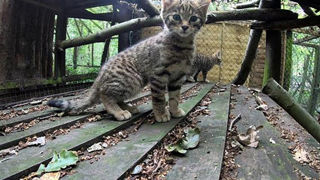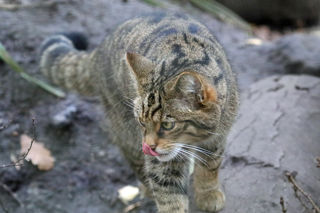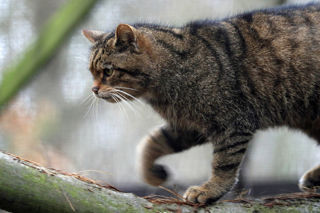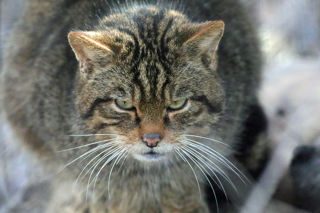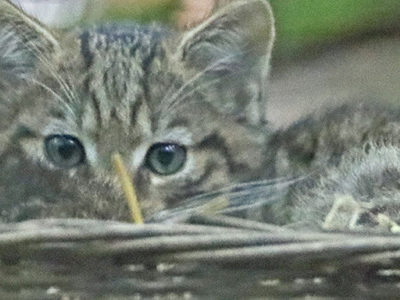
Conservation spotlight - Wildcat
4th Jan 2021
Species: European wildcat
Looks
Often mistaken as a tabby cat in appearance but there are key differences. The wildcat is larger, and has a distinct fur pattern made up of unbroken stripes. It has a much thicker tail which is ringed and ends in a blunt tip.
Habitat (living spaces)
Wildcats live across a range of habitats with preference to woodland, though many have adapted to grassland, moorland and agricultural land. In Scotland – the only place in the UK where wildcats exist in the wild – they live within woodland and shrubland.
Status in the UK
The wildcat once roamed all over the UK, but now can only be found in the Scottish Highlands. The decline began in the 16th century when wildcats were hunted and persecuted. Since then, the species has suffered major habitat loss and are at risk of feline diseases. Today, breeding with feral, domestic cats is the main threat to the wildcat’s existence, which dilutes wildcat genetics.
The current wild population in the UK is facing extinction, but with help from reintroduction projects there is hope for the species survival.
Importance for nature
With very few carnivorous predators in the UK, the wildcat keeps prey densities of animals such as hares, rodents and rabbits (a non-native species) in check, playing an important role in maintaining a balanced ecosystem.
Wildwood’s work
Wildwood has a long successful history of breeding wildcats and is keen to contribute to reintroducing the wildcat back into the wild in the UK. Our wildcats are part of the national captive breeding programme.
Wildwood is delighted to be working in partnership with Vincent Wildlife Trust and Durrell Wildlife Conservation Trust with the aim of reintroducing wildcats into suitable habitats outside of Scotland. Combining skills, knowledge and experience of wildcat habitats, behaviour and breeding this project is the first of its kind.
* The IUCN red list is an indicator list showing the conservation status of most wildlife on earth. Species can be classified as Least Concern (LC), Near Threatened (NT), Vulnerable (VU), Endangered (EN), Critically Endangered (CR), Extinct In The Wild (EW), Extinct (EX)

